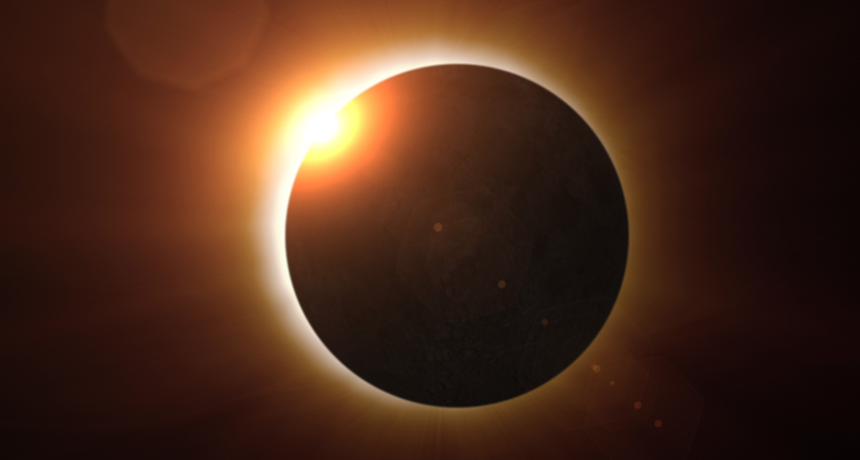Questions for ‘Eclipses come in many forms’

In a solar eclipse, the moon blocks out nearly all of the sun.
NASA/GSFC/CI Lab
Share this:
- Share via email (Opens in new window) Email
- Click to share on Facebook (Opens in new window) Facebook
- Click to share on X (Opens in new window) X
- Click to share on Pinterest (Opens in new window) Pinterest
- Click to share on Reddit (Opens in new window) Reddit
- Share to Google Classroom (Opens in new window) Google Classroom
- Click to print (Opens in new window) Print
To accompany feature “Eclipses come in many forms”
SCIENCE
Before Reading:
1. What is the difference between a star, a planet and a moon? How does our sun fit in here?
2. What happens when the moon and sun align in Earth’s skies?
During Reading:
1. What is the difference between a solar eclipse and a lunar eclipse?
2. Why can a total solar eclipse only occur when there is a new moon?
3. Why doesn’t a solar eclipse occur every month?
4. Describe two things that scientists have learned from solar eclipses.
5. Why are lunar eclipses more common than solar eclipses?
6. Why does the moon appear red during a lunar eclipse?
7. How is an occultation like an eclipse?
8. What did scientists learn about Uranus from a 1977 occultation?
9. How is a transit like an eclipse?
10. Scientists have used transits to study objects in space. Describe one of their discoveries.
After Reading:
1. Compare and contrast eclipses, occultations and transits.
2. You would like to see an eclipse, occultation or transit. Which event would you choose? Explain your answer using information from the story.
MATHEMATICS
1. The moon is 3,476 kilometers in diameter. Using information from the story, calculate the diameter of the sun. Show your work.
2. The average time between new moons is 29 days, 12 hours, 44 minutes and 3 seconds. How many, on average, new moons are there in a year? Show your work.